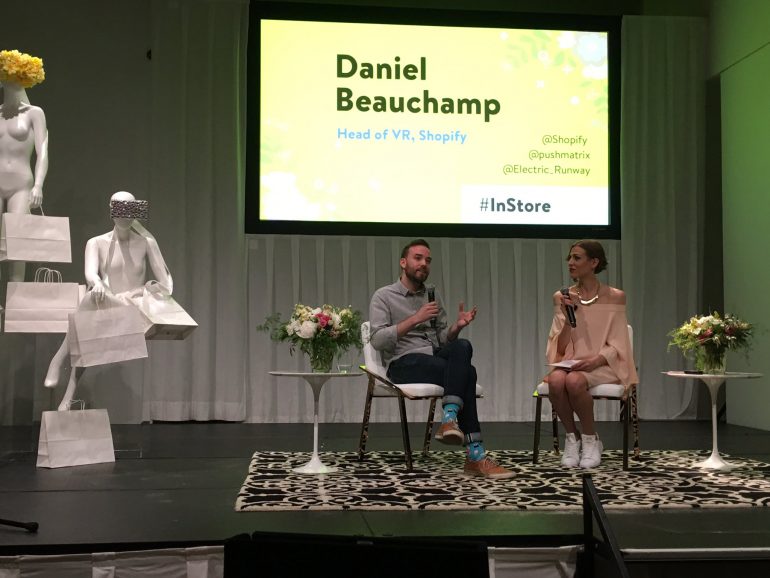On Tuesday, Electric Runway hosted InStore in Toronto, which looked at how emerging technology could change the retail landscape.
The event included experts from across the retail tech spectrum — including AI, virtual commerce, and augmented retail — and an immersive retail showroom that featured demos with CALA, Kinetic Cafe, and Klothed.
Jennifer Lee, who leads the national retail and consumer analytics practice at Deloitte, stressed the importance of using tech during a changing period in retail. “In 2010, 34.3 billion people went to (malls in the US), and in 2015, it dropped to 13 billion people. This number is the reason why shopping malls are looking to technology,” said Lee. “This is a perfect time for entrepreneurs to come in and teach and help the shopping centres to actually drive experience.”
“VR is such an amazing storytelling platform, and brands need to take advantage of that.” –
Daniel Beauchamp, head of VR at Shopify
An example of a retailer embracing tech in its shopping experience is Japan-based Uniqlo, which uses AI to determine a shopper’s mood and then matching it to a selection of their t-shirts. Lee said this is the kind of testing happening in stores to see where retailers can make the path to purchase more efficient. “Where are the friction points in the path to purchase so that we can collect the data sets to best offer the right product and service?” said Lee.
Parham Aarabi, CEO of Toronto-based Modiface, is working on answering this question by looking at the intersection of augmented reality and AI.
He said AR is a significant source of data, and people use it every day in the form of Snapchat filters. Modiface, which creates AR technology for the beauty and medical industries, takes the data collected with its advanced AR, and uses AI to make personalized makeup recommendations based on its knowledge of faces.
“Every beauty brand that we partnered with, they realized that (the tech) is actually increasing their sales in any channel their products are sold. And that caused them to actually be more interested in putting this in their stores,” said Aarabi.
#instore Great conversations! LOVED the local and democratic examples that can empower us to bring high quality products to our customers. pic.twitter.com/v3uDkNP5Gk
— Renn Scott (@RennDGFTech) May 3, 2017
Currently, Modiface is developing an eye motion tracker, which can sense where a user’s eyes are looking on the screen and cause ads to appear in those spots. This could create a privacy issue, since the face is a very personal body part to be collecting data on. When asked how Modiface protects their users’ privacy while still allowing their tech to become more intelligent, Aarabi said that they focus on running more machine learning tests so that the AI doesn’t need to store users’ faces — just learn from every face it sees.
But some think that retailers don’t push the boundaries with tech enough. Daniel Beauchamp, who leads the VR team at Shopify, looks at how VR can enhance the shopping experience. Beauchamp says that VR has endless possibilities, and his biggest grief is when commerce only uses VR to recreate the experience of a traditional shopping mall.
“VR is such an amazing storytelling platform, and brands need to take advantage of that. For the first time brands can take people and put them in the stories that their products tell,” said Beauchamp.
The biggest challenge for Beauchamp’s VR team is figuring out how to make it easier for merchants to digitize their products in order to be able to use the high-tech tools they are developing.
Photo via Twitter


